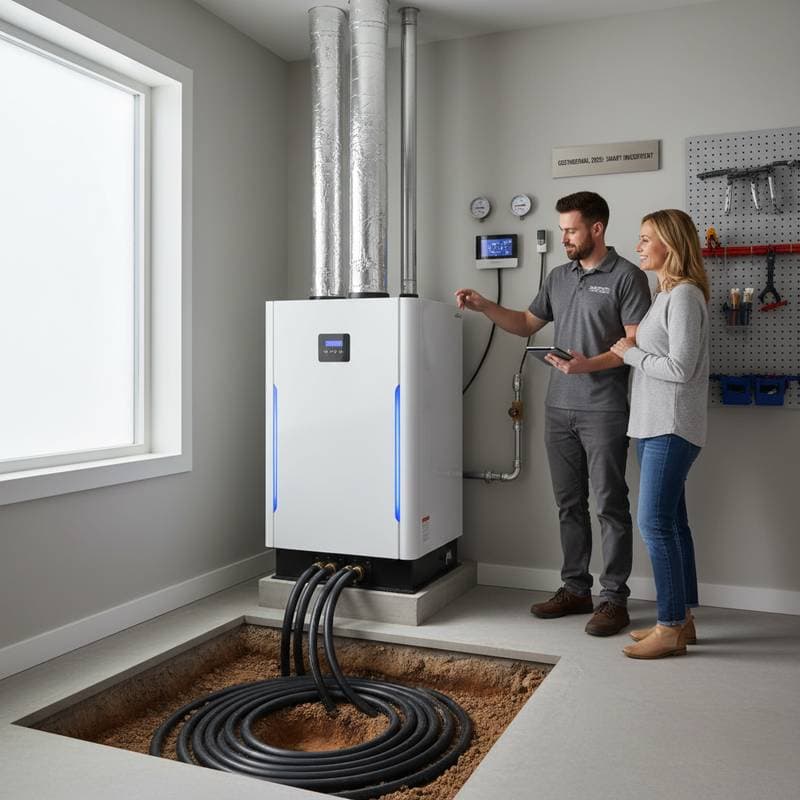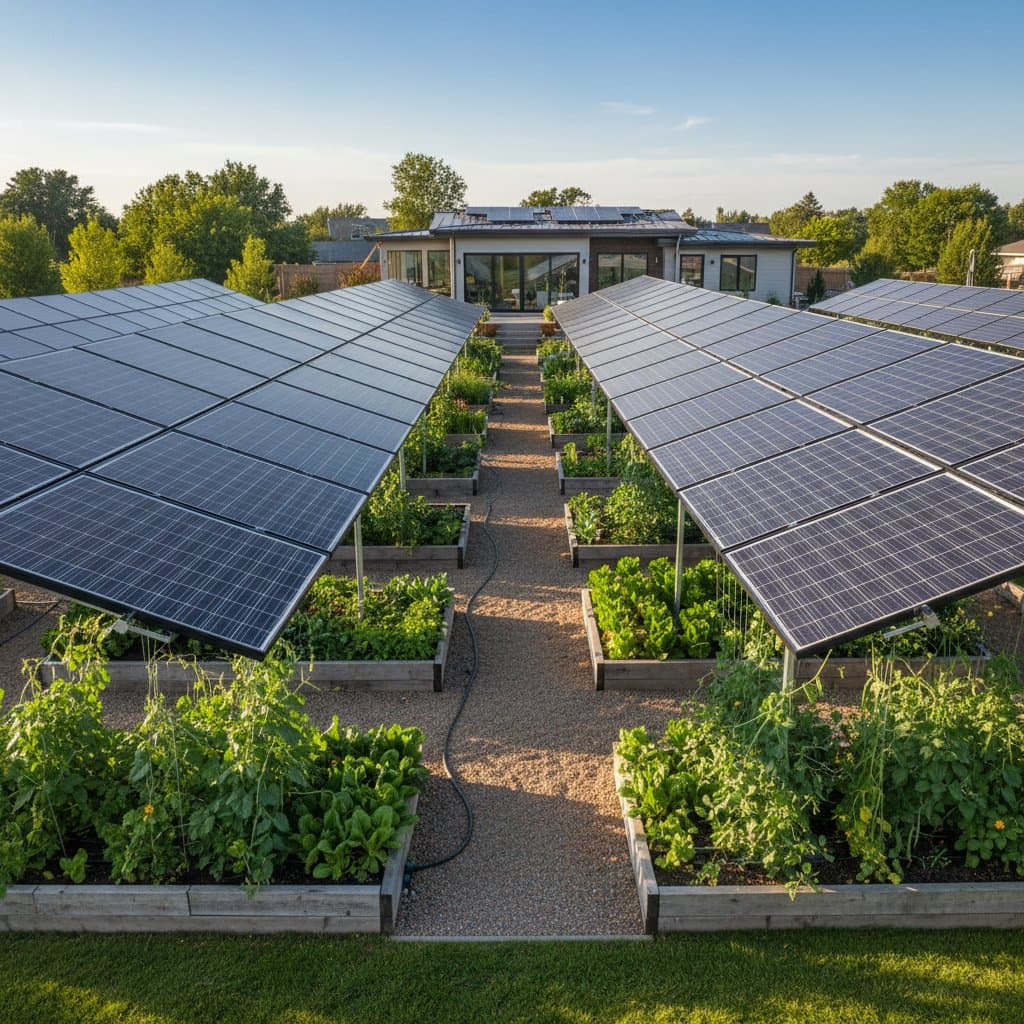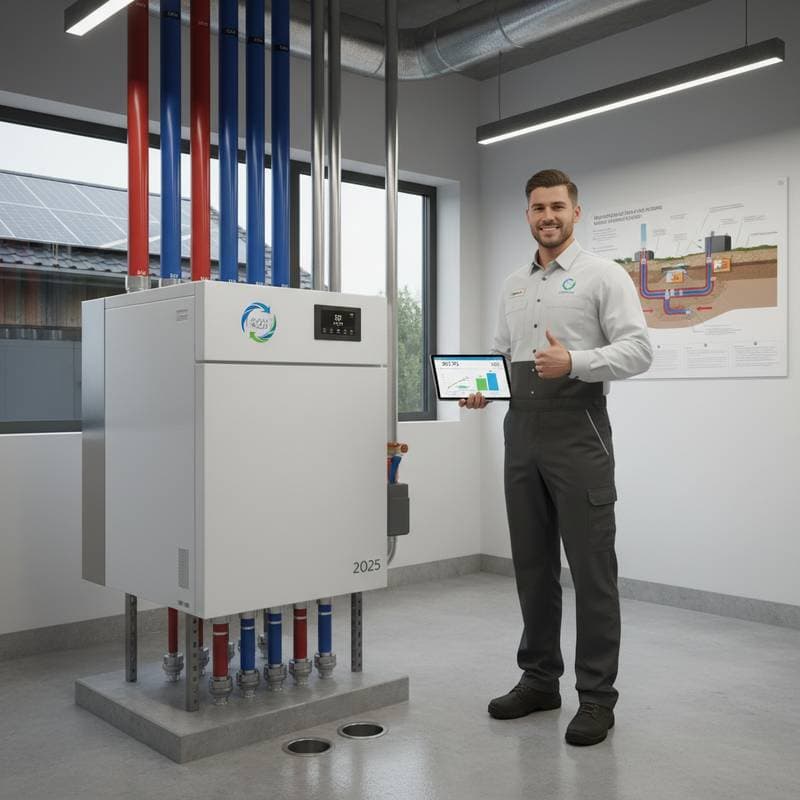Key Points
- Geothermal HVAC systems reduce household heating and cooling costs by 40 to 70 percent compared to conventional systems.
- Federal incentives and regional utility rebates lower installation expenses significantly.
- Equipment lasts 50 years or more for loops and 20 years for heat pumps, providing superior long-term returns.
- Site assessment, soil analysis, and expert design maximize efficiency and accelerate payback.
- Early adopters gain financial savings, increased property value, and alignment with sustainable market trends.
Addressing Heating and Cooling Challenges
Homeowners upgrading HVAC systems must balance current expenses with future benefits for comfort, finances, and environmental impact. Conventional systems depend on fossil fuels or variable electricity rates, leading to unpredictable costs. Geothermal systems, or ground-source heat pumps, leverage the earth's constant subsurface temperatures to provide efficient heating and cooling throughout the year.
Upfront planning and investment are essential, yet the returns prove substantial. For those focused on energy strategy, property enhancement, and operational efficiency, geothermal technology offers compelling advantages in residential settings.
Financial Benefits of Geothermal Systems
Stable Operating Expenses
Conventional HVAC relies on volatile fuel or electricity prices. Geothermal systems extract energy from the ground, where temperatures stay consistent year-round. This reliability results in steady utility bills.
Well-designed systems achieve 300 to 500 percent efficiency, delivering three to five units of heating or cooling per unit of electricity used. Homeowners typically realize 40 to 70 percent savings on utilities relative to traditional setups.
Extended Durability and Lower Maintenance
Standard furnaces and air conditioners last about 15 to 20 years, while geothermal loops endure 50 years and indoor heat pumps 20 years or longer with basic care. Fewer components reduce failure risks.
Regular tasks include filter replacements, inspections, and loop monitoring to sustain performance. Over time, these requirements cut maintenance expenses far below those of conventional systems.
Available Incentives
Federal tax credits and utility rebates now cover 20 to 30 percent of installation costs for many projects. Pair these with energy-efficient mortgages or targeted home loans to make geothermal a practical choice rather than an extravagance.
Environmental and Property Value Gains
Lower Emissions and Greater Independence
Geothermal eliminates on-site fuel burning, slashing carbon output by several tons annually for a typical home replacing a gas furnace. This reduction advances sustainability while shielding owners from fuel price swings.
Property-based energy sourcing enhances control over comfort and expenses. In areas with rising energy rates, this autonomy proves particularly beneficial.
Enhanced Market Position
Buyers favor homes with efficient, sustainable features. Real estate data shows properties equipped with advanced systems fetch higher prices and attract offers more quickly.
Geothermal installation demonstrates commitment to quality and durability. Prospective owners value the ongoing savings, superior air quality, and eco-friendly credentials as standout attributes.
System Fundamentals
Core Mechanism
Geothermal systems circulate fluid through loops to exchange heat with the ground. During winter, they pull warmth from the earth into the home. In summer, excess indoor heat transfers to the cooler subsurface.
A heat pump manages this process using refrigerant, akin to a refrigerator's cycle but optimized for smaller temperature differences. Lower differentials mean reduced energy needs for heat transfer.
Loop Options
Loop type varies by site specifics like soil, space, and scale.
- Horizontal loops bury in shallow trenches, best for spacious yards.
- Vertical loops bore deep boreholes, fitting compact or rocky sites.
- Water-body loops utilize nearby ponds or lakes for cost-effective, high-performance setups.
Experts evaluate conditions to select and size the optimal configuration.
Compatibility with Current Infrastructure
New geothermal units can fully replace or augment existing HVAC. Hybrid setups pair ground-source pumps with efficient furnaces for added flexibility. Integration works seamlessly with ductwork or radiant floors, minimizing renovations.
Weighing Initial Investment Against Ongoing Rewards
Upfront Expenses
Residential installations range from $15,000 to $45,000, influenced by soil type, drilling depth, and capacity. Retrofit options for smaller homes often fall at the lower end.
These costs diminish in context with lifetime savings on energy, upkeep, and longevity.
Recovery Timeline and Returns
Most owners recoup premiums in 5 to 10 years through utility reductions of thousands yearly. Incentives and fuel price trends shorten this period further.
Across 20 years, net savings surpass conventional systems by tens of thousands. Returns rival or exceed standard investment yields.
Funding Approaches
Explore these options to ease adoption:
- Energy-efficient mortgages that include projected savings in affordability assessments.
- Home equity loans or upgrades financing with rates suited to green initiatives.
- Utility billing repayment plans that spread costs via monthly statements.
Layering rebates with financing often bridges the cost difference entirely.
Comfort and Health Improvements
Uniform Temperature Control
Geothermal delivers even heat distribution, avoiding the temperature fluctuations of forced-air systems. Enhanced dehumidification fosters consistent comfort across seasons.
Superior Air Purity
Absence of combustion byproducts and external units limits pollutant introduction. Reduced airflow needs correlate with less dust and allergen buildup, as noted by many users.
Silent Functionality
Indoor or buried components operate with minimal noise. Homes remain tranquil without the drone of compressors or fans.
Building Long-Term Reliability
Performance in Varied Weather
As climates shift, geothermal's ground reliance ensures steady output amid extremes. Subsurface stability outperforms weather-dependent alternatives.
Readiness for Emerging Tech
Installed loops pair easily with solar arrays, storage solutions, or smart grids. Early implementation prepares homes for advancing energy integrations.
Minimal Upkeep Demands
Protected elements resist environmental damage, even in severe conditions. This design cuts repair frequency and preserves efficiency over decades.
Choosing Qualified Experts
Credentials and Track Record
Seek contractors certified by groups such as IGSHPA or NATE, ensuring proficiency in geotechnical evaluation, loop engineering, and system tuning.
Comprehensive Site Review
Professionals examine geology, water flow, and layout to determine feasibility. Accurate sizing prevents underperformance or inefficiency.
Detailed Pricing
Trustworthy providers break down expenses for drilling, hardware, and labor. They assist in rebate applications and savings projections.
Ongoing Service
Establish maintenance agreements for yearly checks on fluids, pressures, and components. Proactive care upholds warranties and longevity.
Frequently Asked Questions
What level of disruption occurs during installation?
Loop work involves digging or drilling, but restoration follows promptly. Surface impacts resolve quickly in most cases.
Do these systems function in cold areas?
Affirmative. Subsurface warmth persists in winter, supporting full-year efficiency.
How does resale affect unrecovered costs?
Equipped homes appreciate faster and higher, with buyers crediting the efficiency gains toward value.
Are auxiliary backups necessary?
Sized correctly, standalone units suffice in typical climates. Rare extremes may engage supplements sparingly.
Is retrofitting viable for older homes?
Certainly. Many projects leverage existing ducts or heating layouts, adapted to site constraints.
Steps to Implement Geothermal
Evaluate your home's energy profile and local incentives first. Engage certified specialists for tailored assessments and quotes.
Geothermal elevates daily living with reliable comfort, compounding savings, and ecological benefits. As markets prioritize resilience, this upgrade secures your home's efficiency and appeal for years ahead.









